
Airy meringue, delicate cream and the sour taste of berries - this cake is a heavenly delight.
Yulia MulinoThe history of the legendary "Tatarstan" cake goes back to the 1970s. At that time, a young master pastry chef, Zurab Khubulava, was sent to Kazan, the capital of Russia’s region of Tatarstan (situated about 700 km east from Moscow) to manage the Zarya Confectionery Factory. Having been put in charge of a rather old company, Khubulava decided that it had to be modernized. He upgraded the equipment, expanded its size and increased the number of employees. This allowed Zarya to become one of the leaders among Soviet confectioneries of that era.
His other goal was to create a new dessert, different from the traditional local ones (the most famous is chak-chak), but which would retain the character and culture of the region. First and foremost, that means the cake was sweet and could be preserved for a long time. This is why the confectionaries made it without sponges, and only with dry egg whites (in our recipe we'll use fresh ingredients). Together with his colleagues Nina Tyagunova and Khasiba Zaripova, Khubulava developed and produced a new meringue-based cake.
Almost overnight the new cake became a sensation. People waited in long lines, even getting there during the night just to have the chance to buy it. You’d then have to get on a waiting list, and only later would you pick up the cake according to a set appointment. Visitors to Kazan were keen to try this cake and even take one home in order to impress their friends with this special treat from Tatarstan. This cake with the eponymous name of the region was the perfect souvenir.
In addition to the protein meringue layers, the cake is made with egg white cream and cranberry jam. It was decorated with meringue and chocolate. Today, this cake is not as popular as it was 50 years ago, but you can still buy it in some confectioneries in Kazan.
Connoisseurs of meringue desserts have adapted the state standard recipe and make it at home. There are variations, for example, with nuts in the layers and without cranberry jam. Its composition slightly resembles the famous dessert "Pavlova".
Taking one of the common recipes as a basis, I decided to give seasonality to the Tatarstan cake. Namely, instead of cranberries, I used fresh currants. With their sour taste, they also compensate for the sweetness of the meringue cakes and cream.
Truth be told, it takes a lot of patience to bake this cake. But the result will be a delectable reward for those who have a sweet tooth and love meringue desserts. Tender, airy, crispy meringue crusts melt in your mouth. The delicate cream adds softness, and the crunchy nuts and sour berries give structure and zest to the whole dessert.

Crusts:
Decoration 1 (meringue):
Cream:
Decoration 2:
1. Let's start by cooking the meringue. The classic recipe calls for using sugar. In my experience, it needs to be thoroughly grounded into a fine powder.
2. It is important to remember that during the whole process, when working with the whites, you must avoid getting fat in the whites, as that will prevent the foam from forming. All utensils, the whisk, and your hands must be clean.
3. Wash the eggs. Carefully separate the egg whites from the yolks.
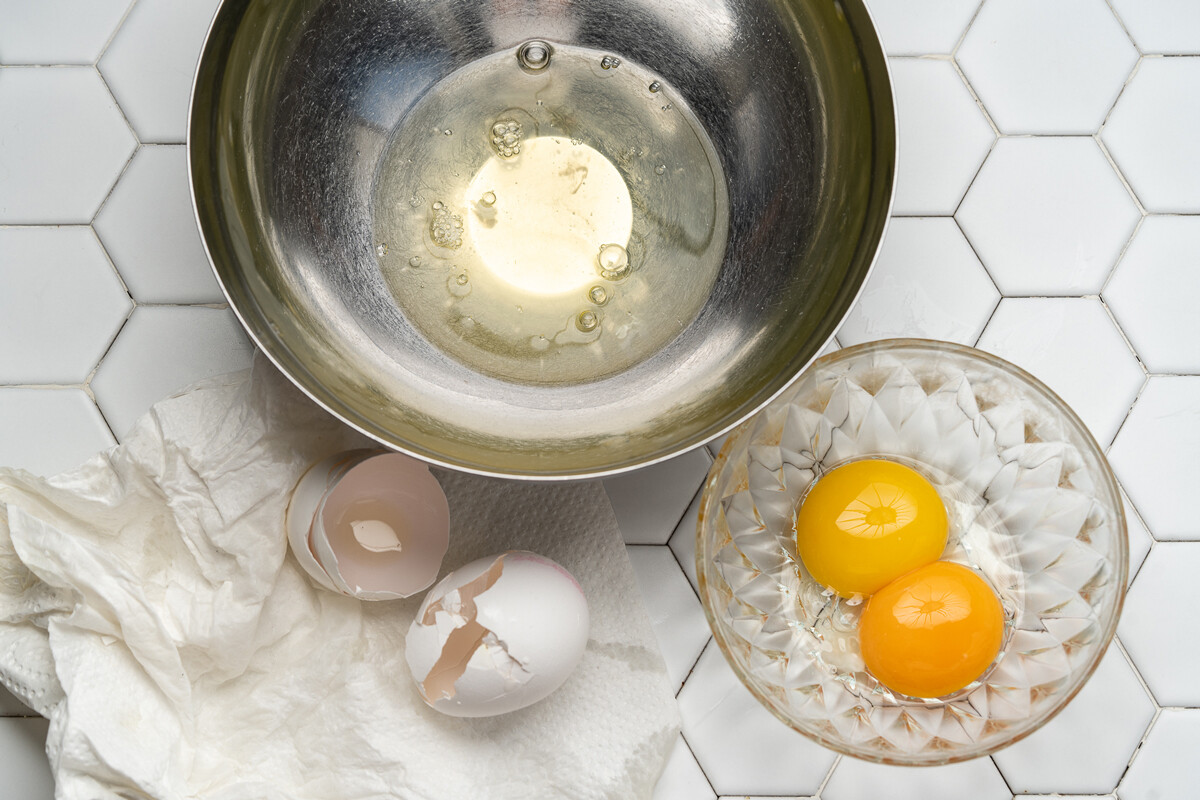
4. Beat the egg whites until they are slightly foamy.
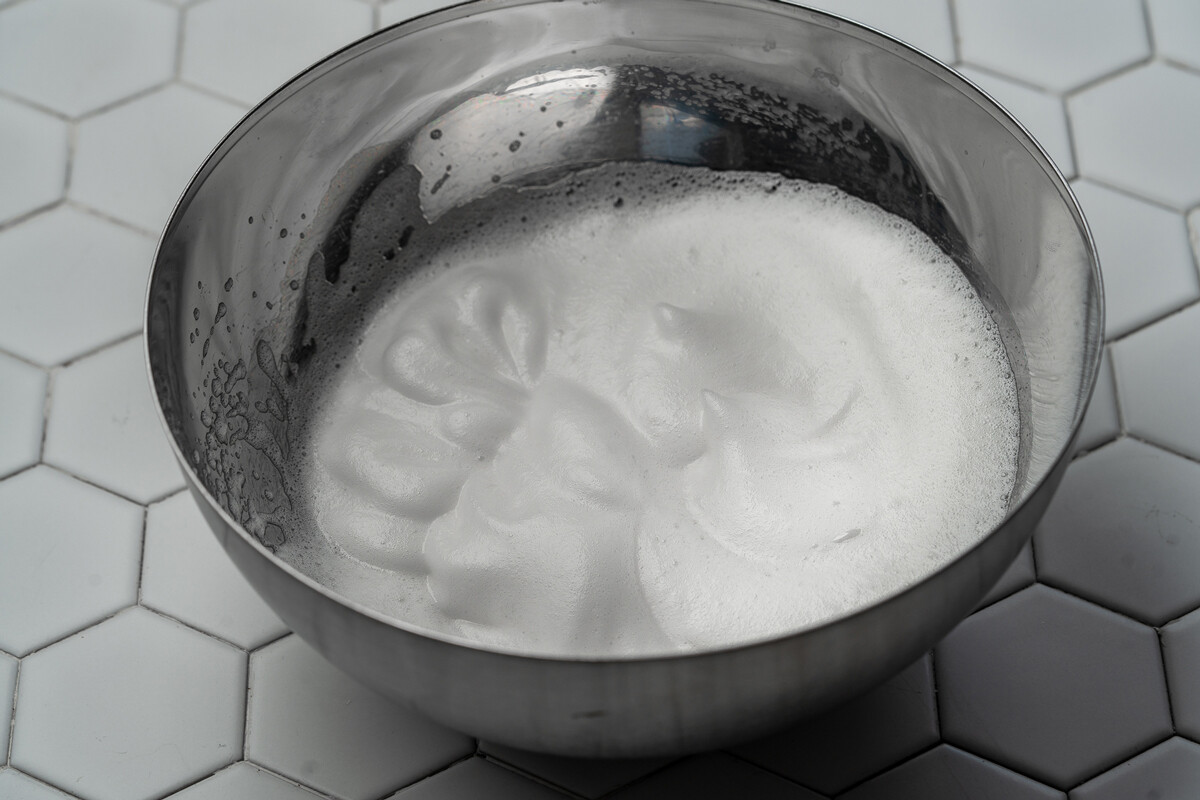
5. Gradually add sugar (powdered sugar is better).

6. Whip until a dense froth of whites holds in an upside down bowl.

7. Place the egg whites in a piping bag.

8. Turn the baking tray upside down, line it with magazine sheets and place baking paper on them. This is to ensure that the meringues heat evenly.
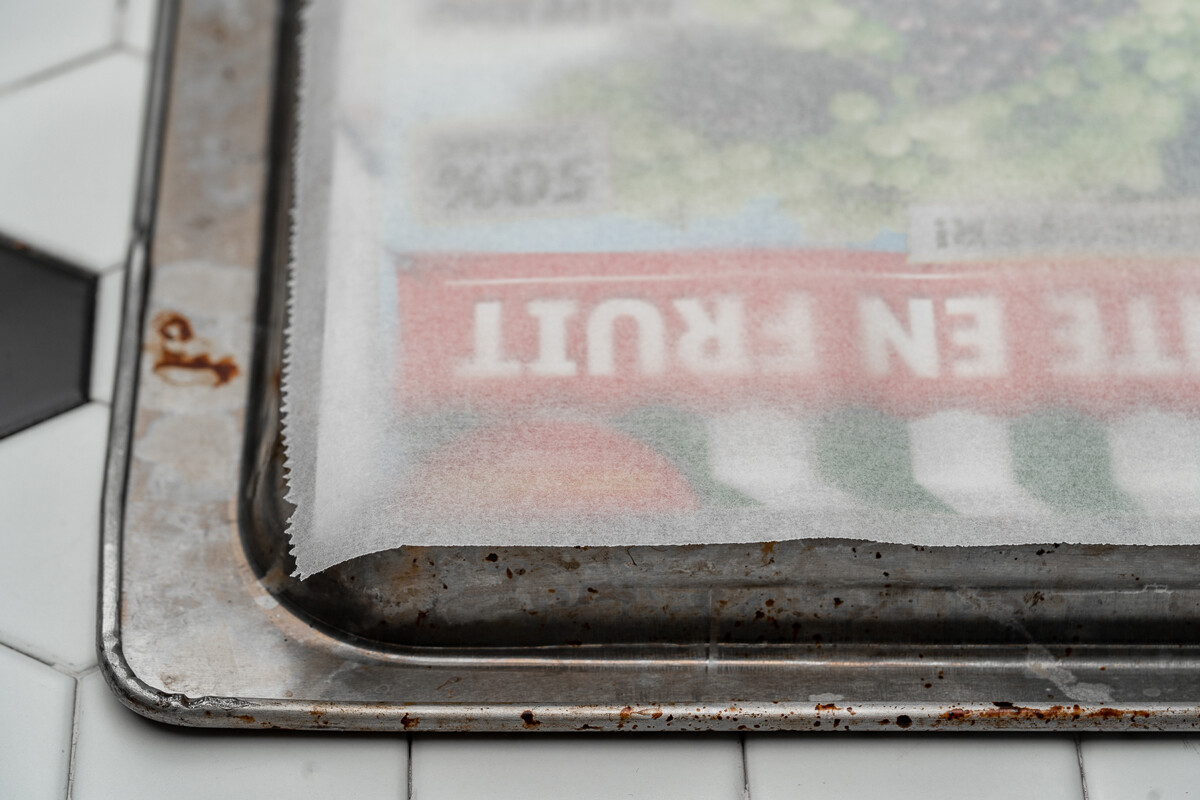
9. Shape the meringues into seashells. I chose to make them small, about 2 centimeters. But usually they are 3 to 4 centimeters.
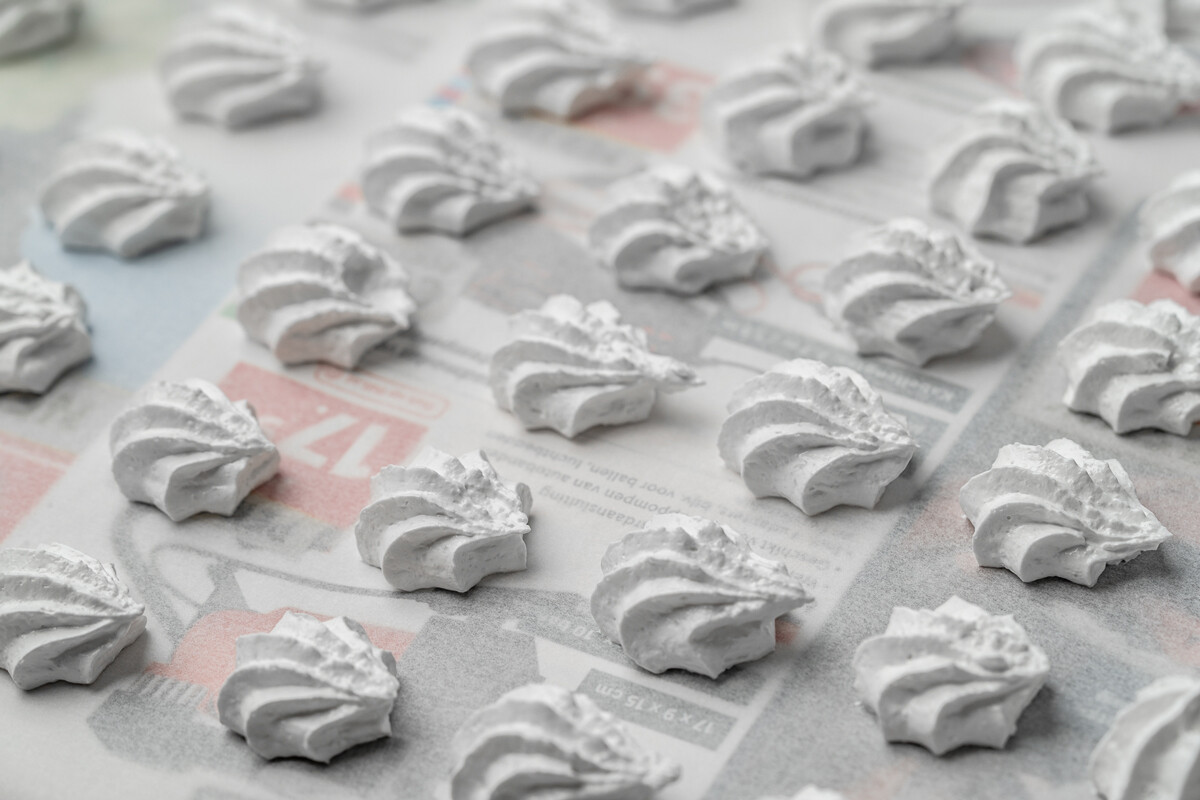
10. Bake the small meringues for 30 minutes at 120℃. Leave to cool in the off oven for another 40 minutes. Larger ones may take longer. They should turn out white and even, smooth on the bottom.
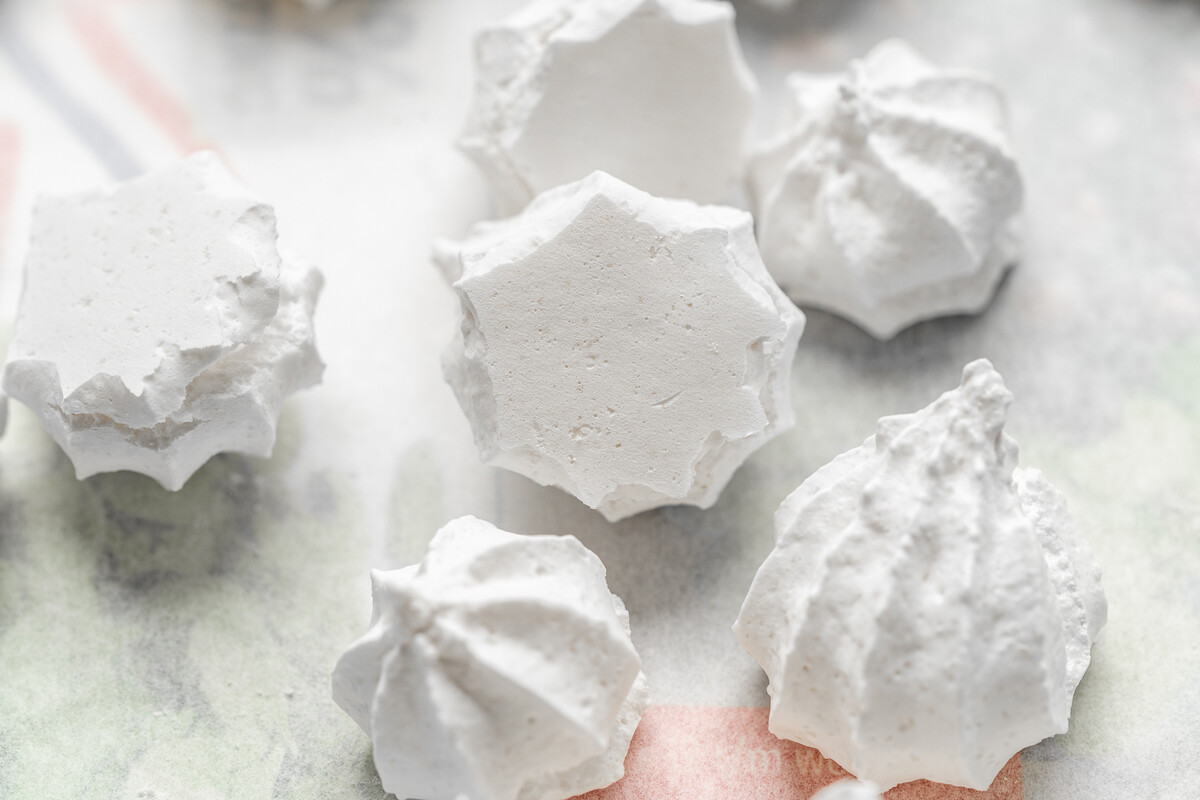
11. I crushed the sugar into powdered sugar.
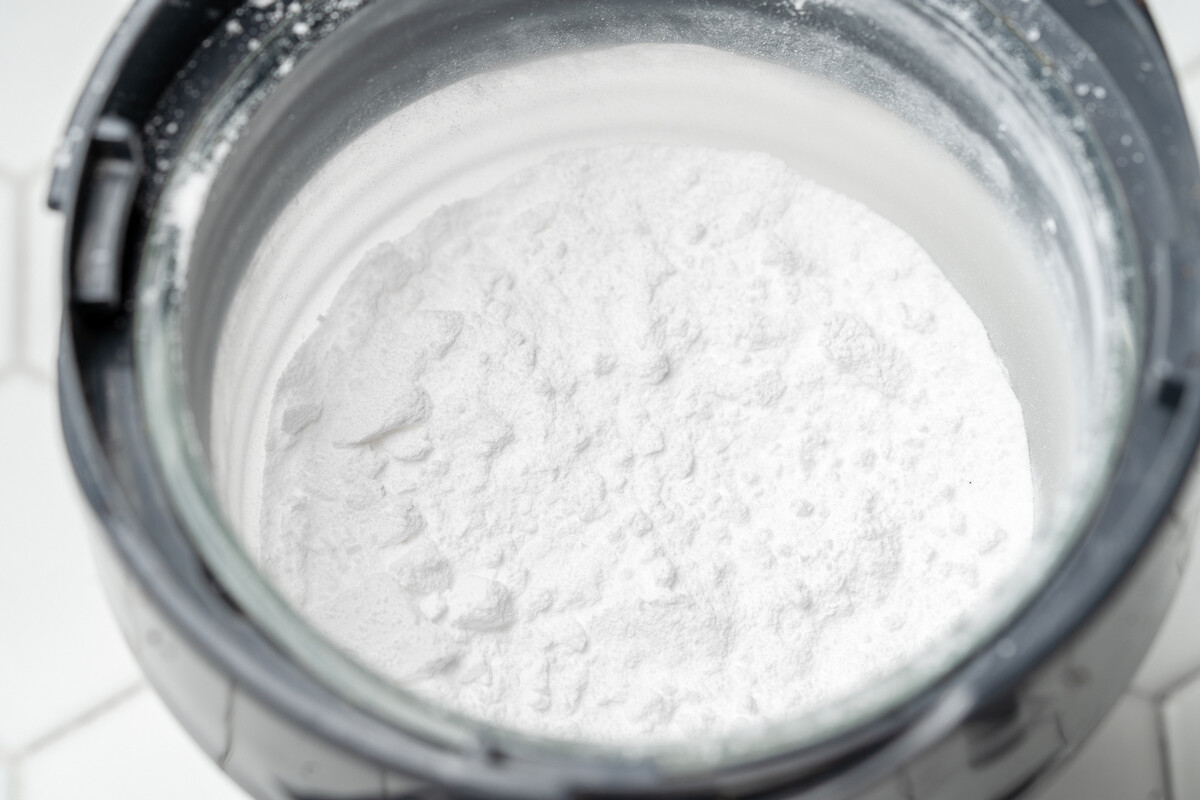
12. For the crusts, separate the whites from the yolks.

13. Pour the vanilla sugar and some of the powdered sugar into the whites. Beat, gradually adding the sugar. When the mixture is firm and the whites have thick peaks, that means it’s ready.
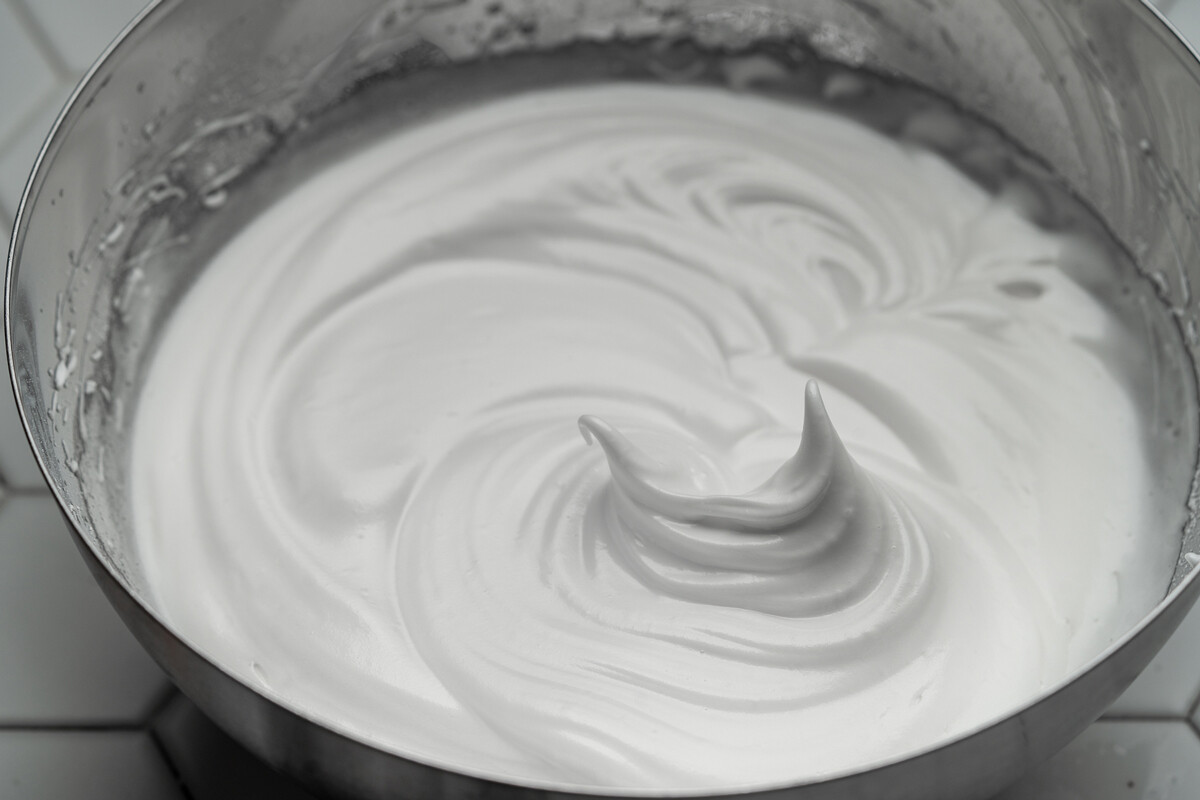
14. On the same paper and tray, make 3 crêpes 15 cm in diameter. Pipe the egg white mass evenly into each circle from a piping bag.
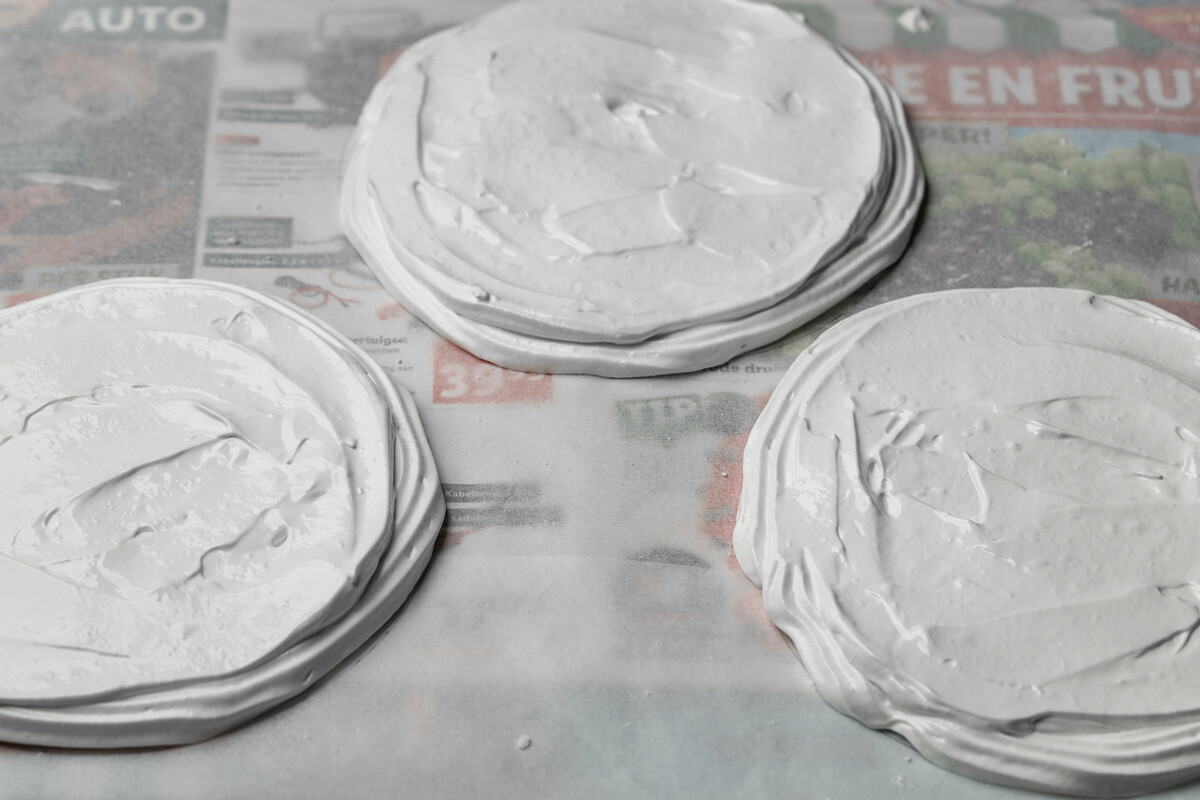
15. Chop the cashews with a knife and roast in a pan until golden brown.
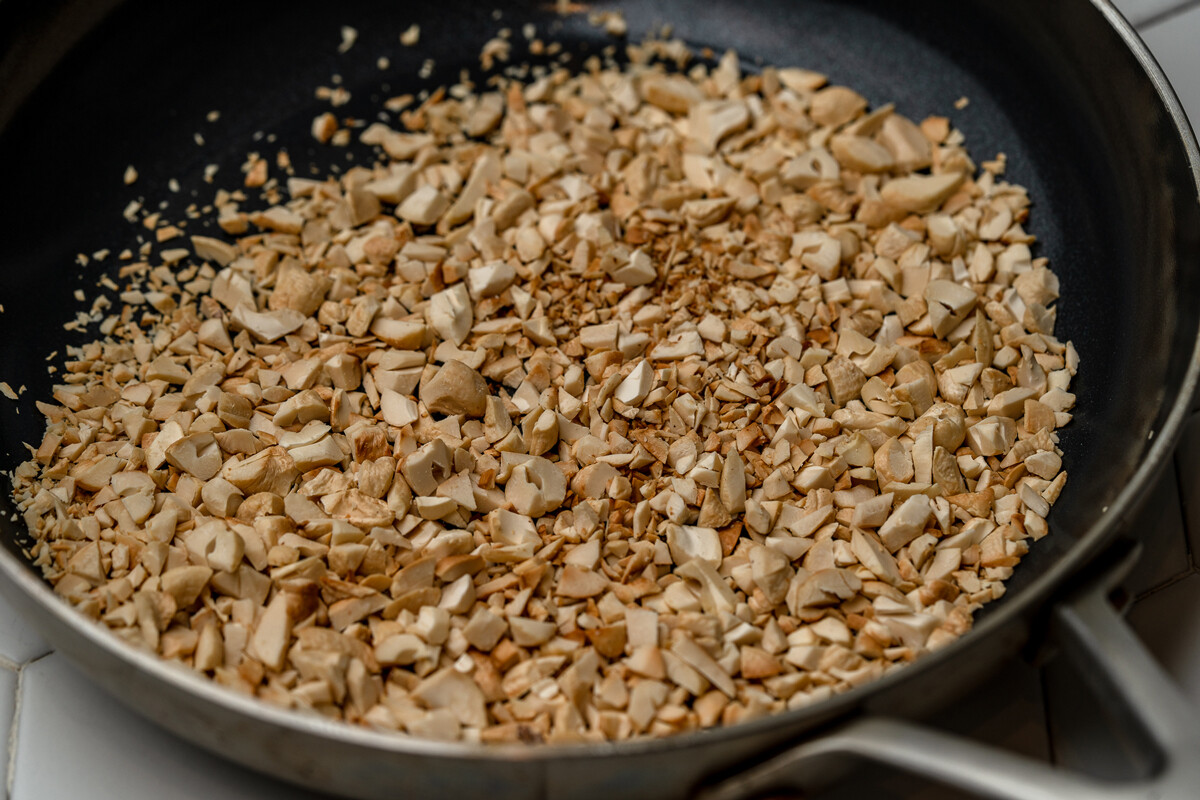
16. Sprinkle the nuts over the cakes.
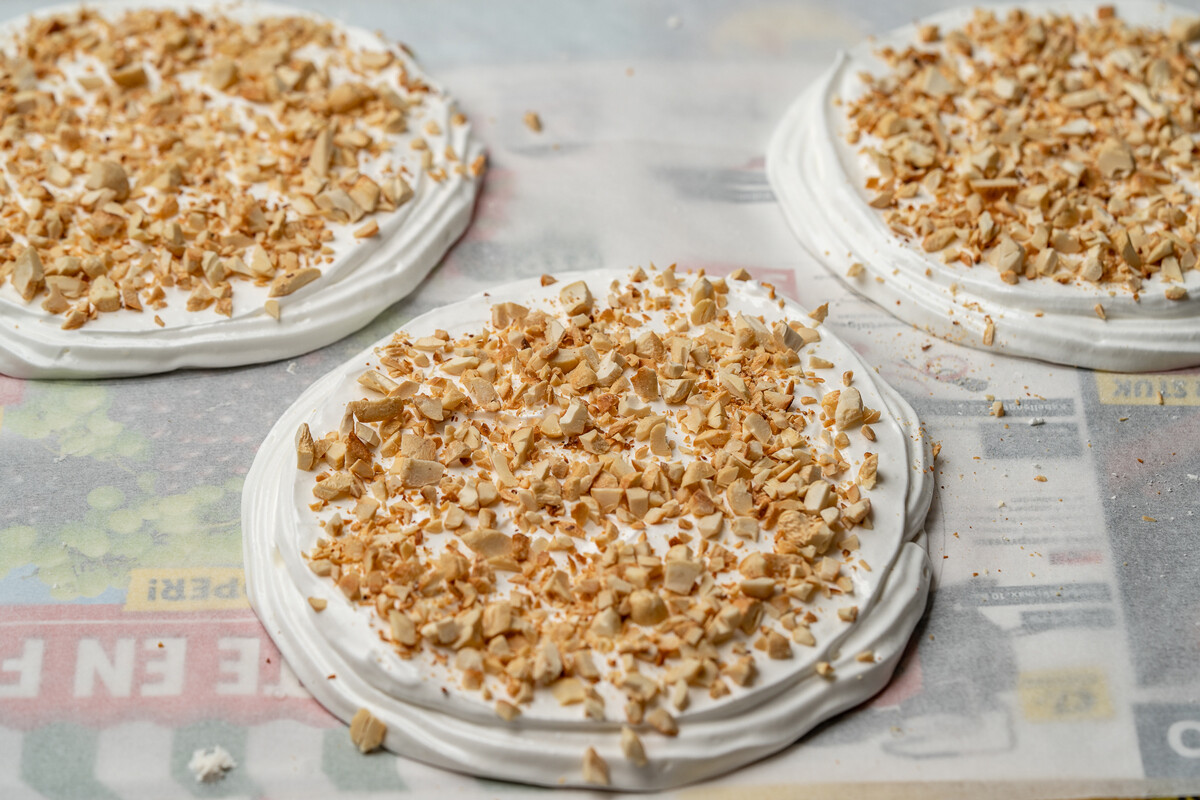
17. Bake at 120℃ for 60-80 minutes. Let the shortcakes cool.
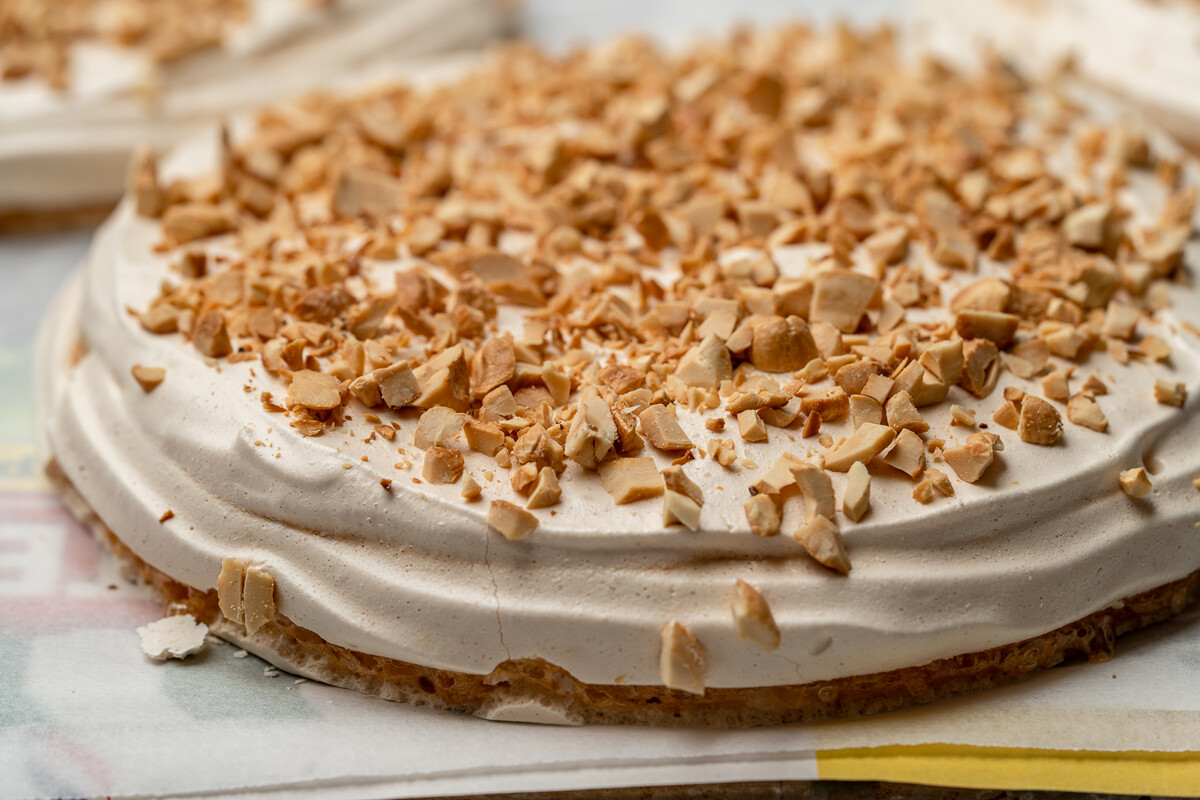
18. While the cakes are baking, prepare the cream.
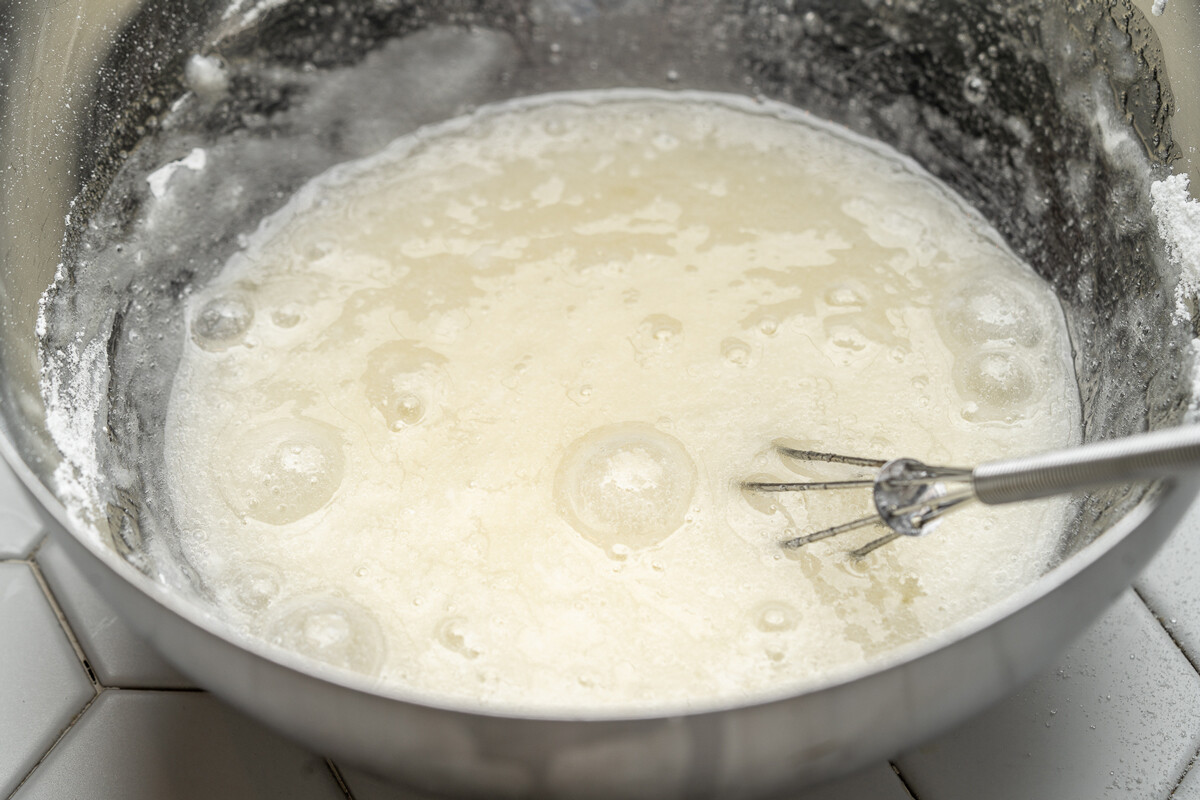
19. Take out the butter beforehand. It should be very soft.
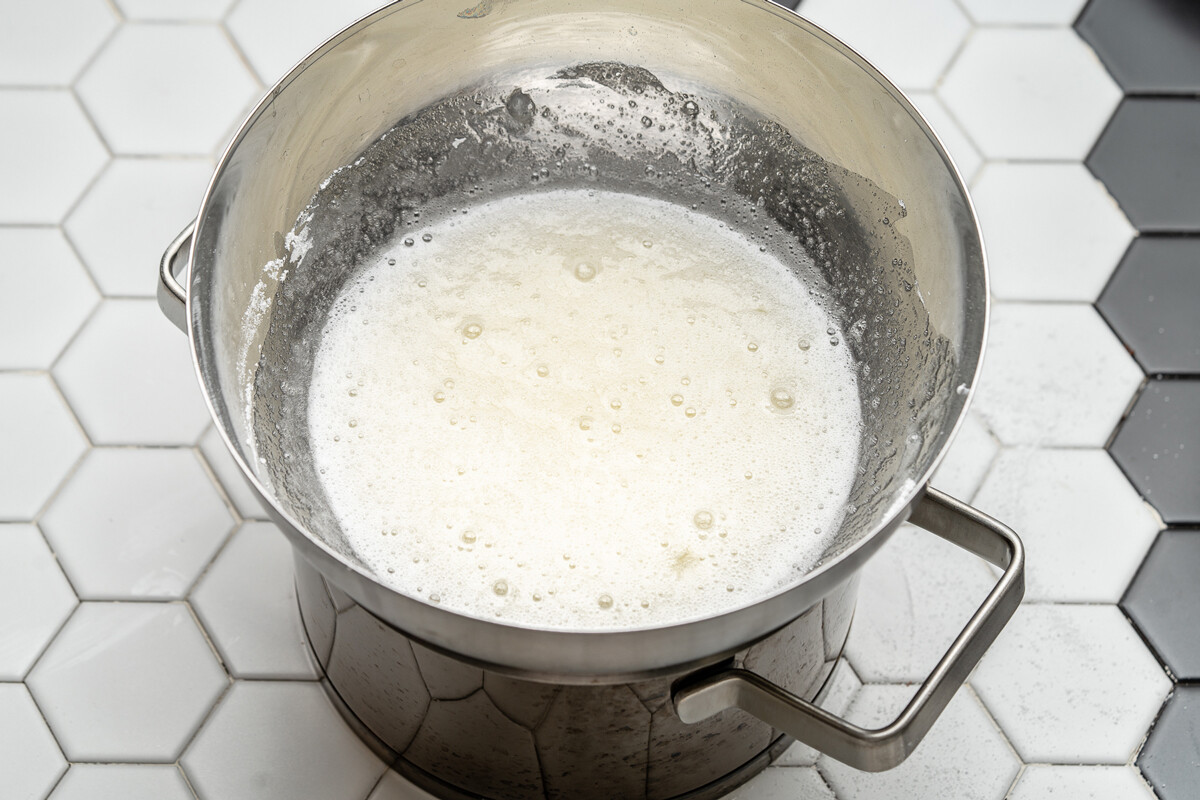
20. Separate the egg whites from the yolks. Stir all the powdered sugar into the whites. Place the bowl in a water bath and heat it to 50-70℃, stirring.
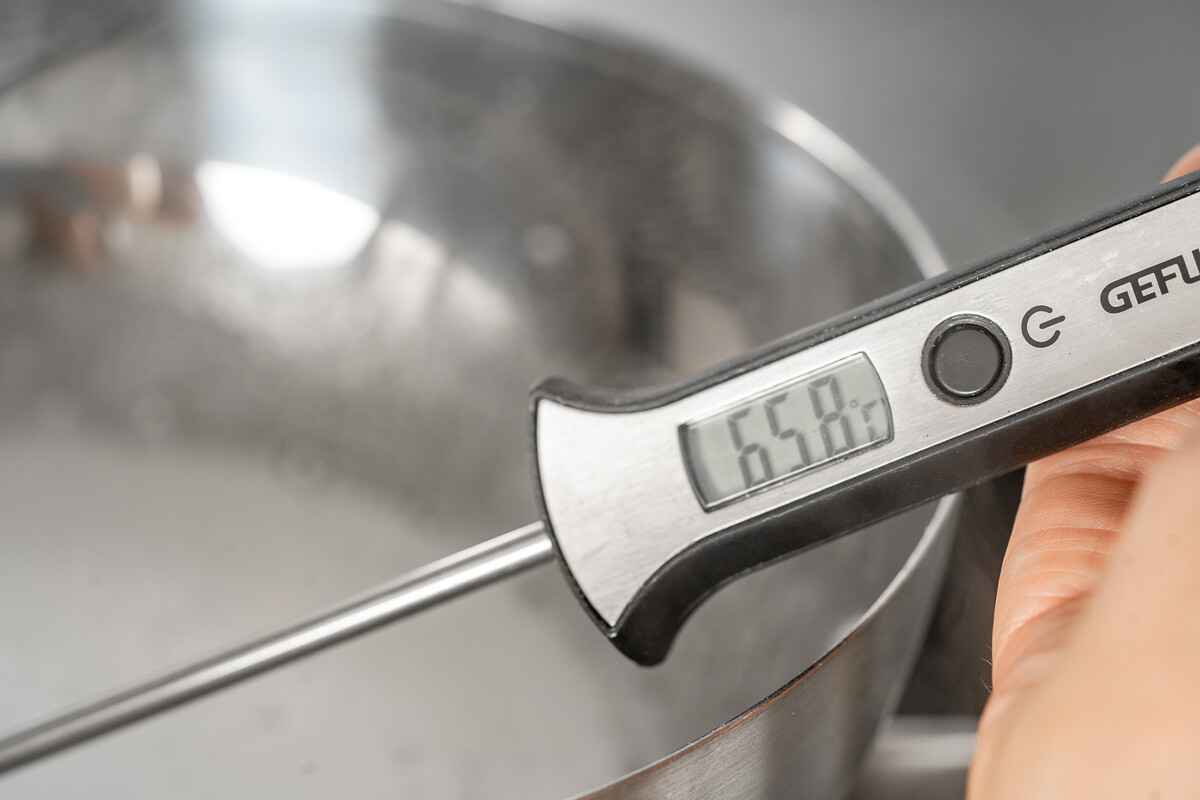
21. Start beating the whites with a mixer.

22. The temperature of the mass should not rise above 70℃.

23. The mass will be white, smooth and elastic.
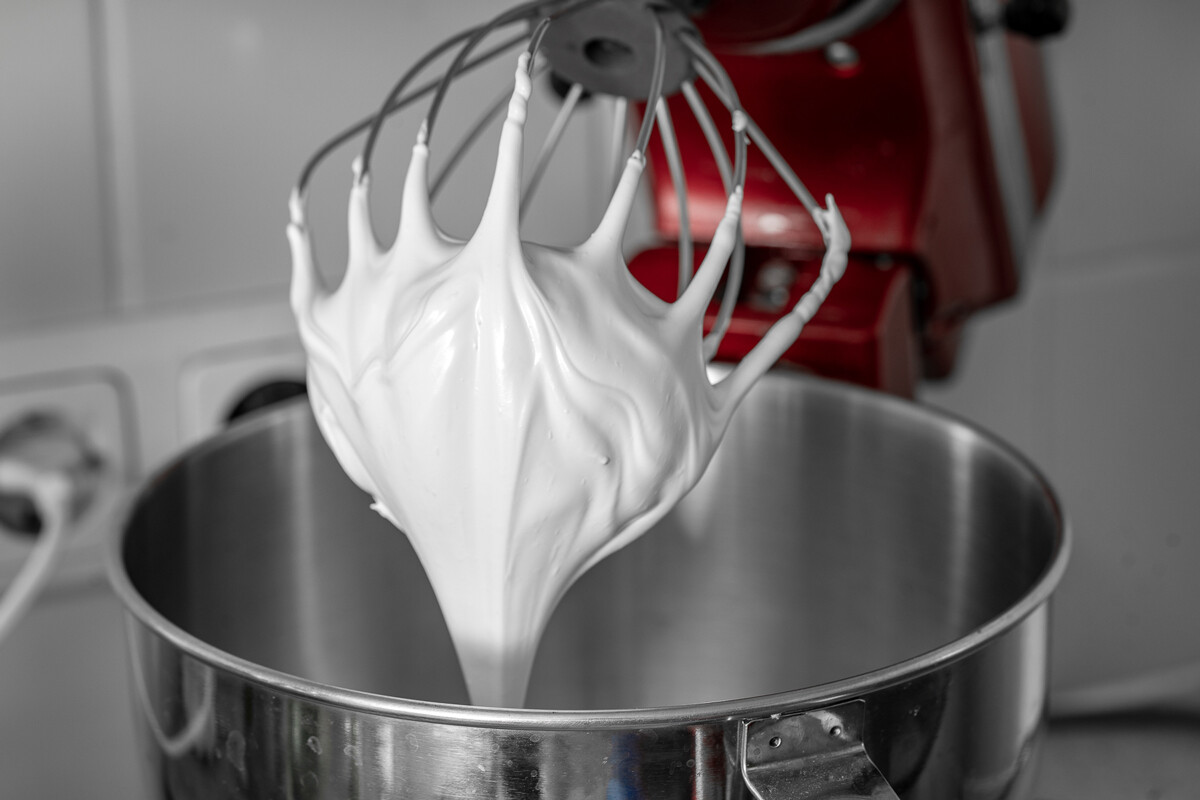
24. Remove the mass from the heat, cool it by putting it in a bowl with ice water.
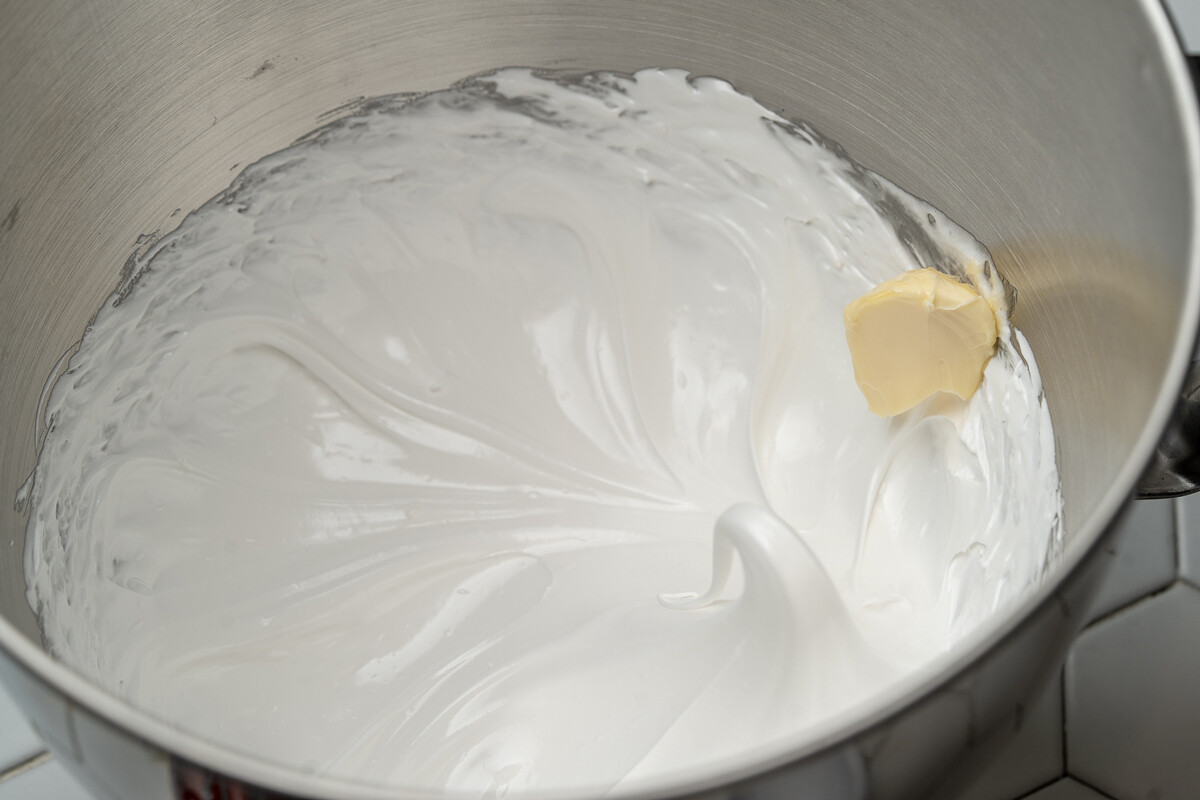
25. Place the egg whites in the bowl of a planetary mixer. Start beating. The temperature of the mixture should not exceed 25℃.
26. Whisk for about 5 minutes. Start adding soft butter, 2 teaspoons at a time. The butter should be very soft. Each portion of butter should combine well with the cream.
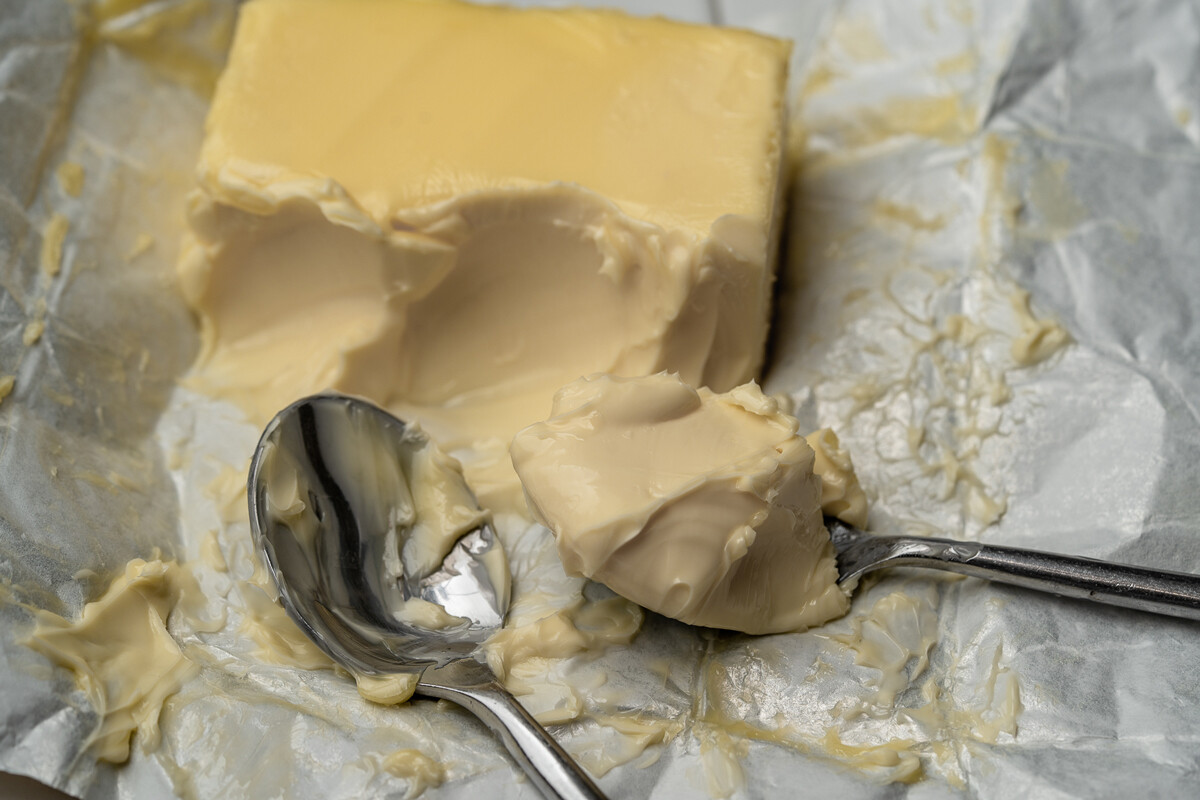
27. The result will be an airy, soft cream.
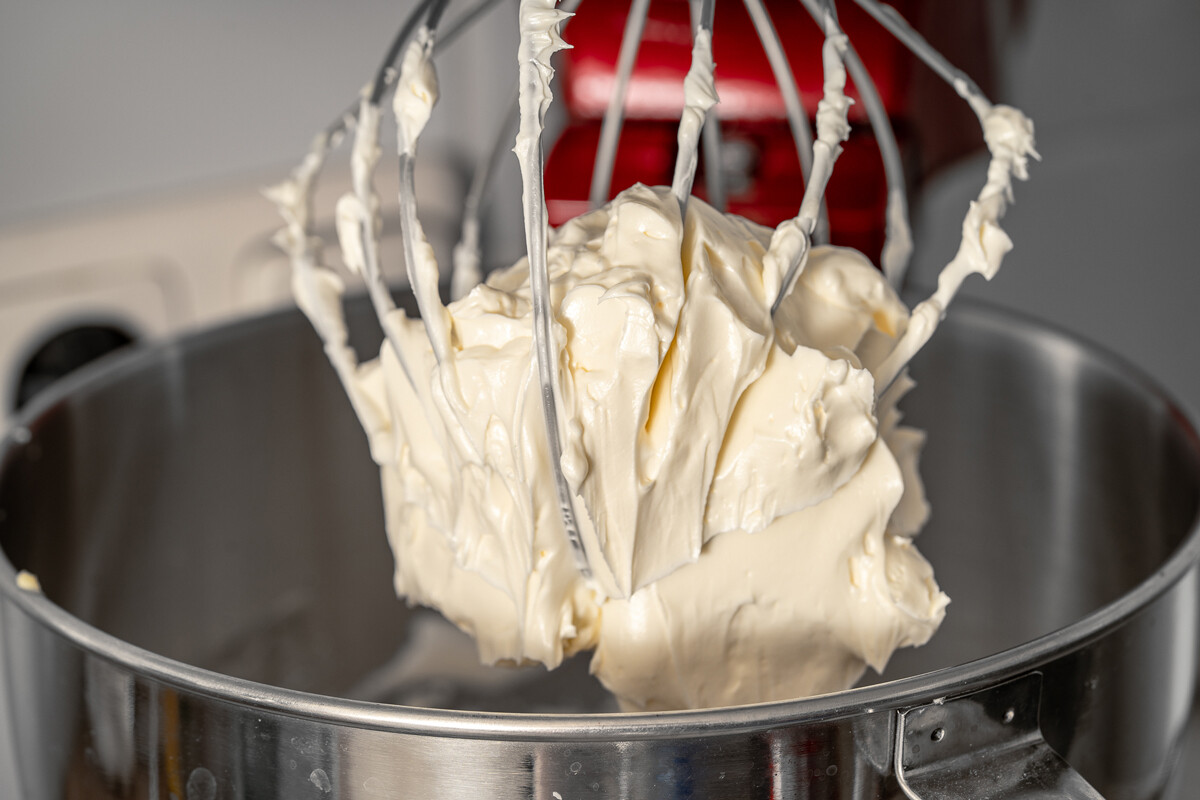
28. At this point, you can add homogeneous cranberry jam. One tablespoon should be enough. Gently mix it into the cream. I skipped this step.
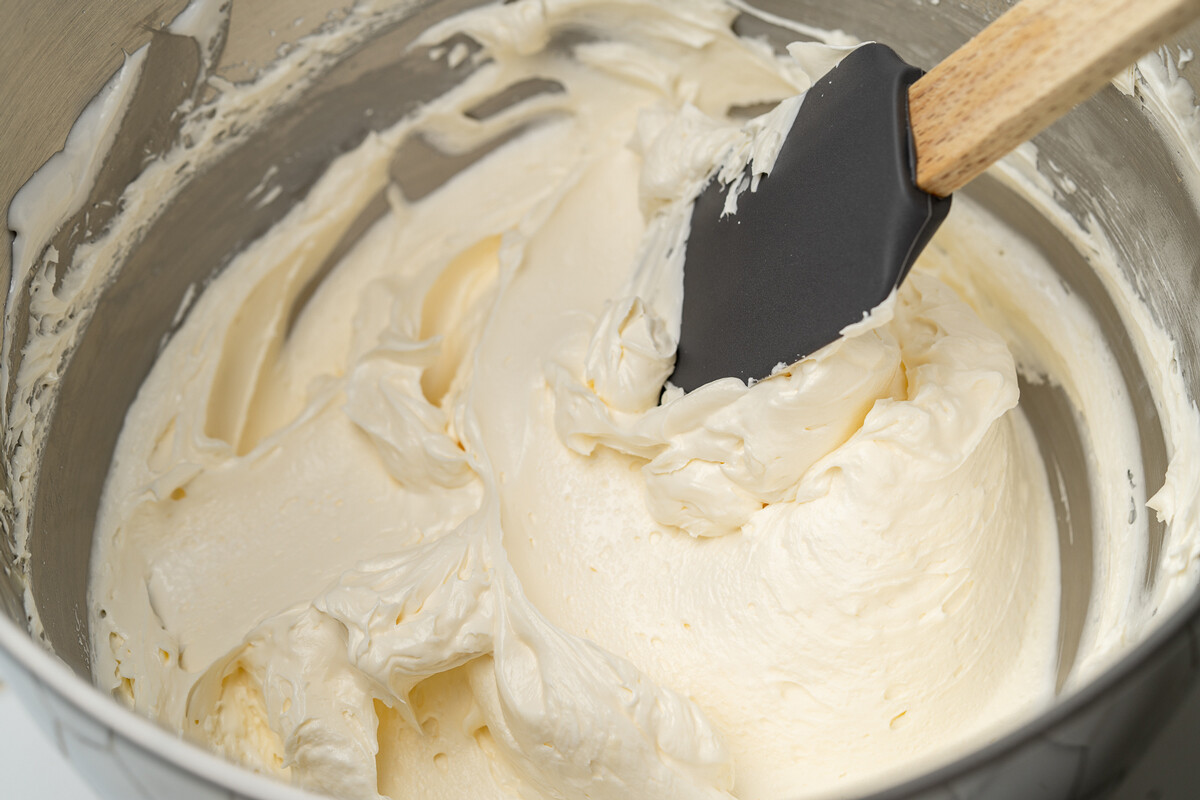
29. Assemble the cake. Brush with cream.
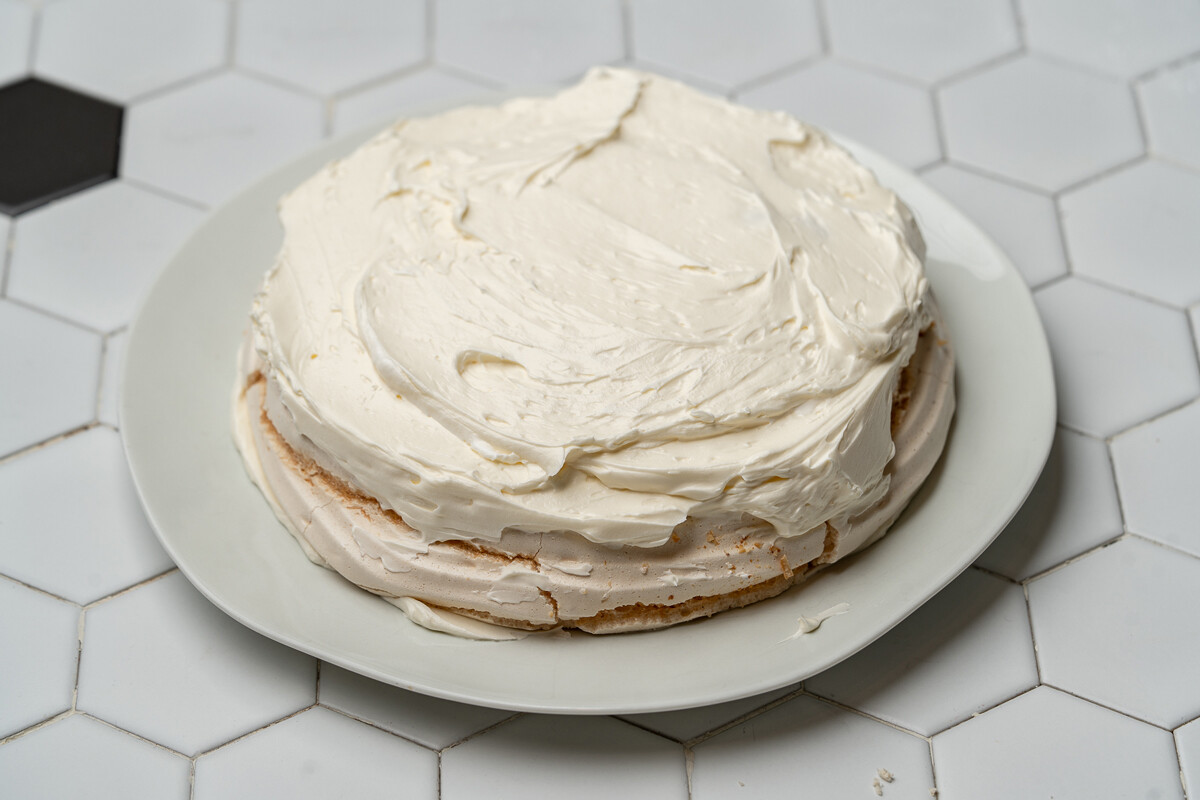
30. Glaze the edges.
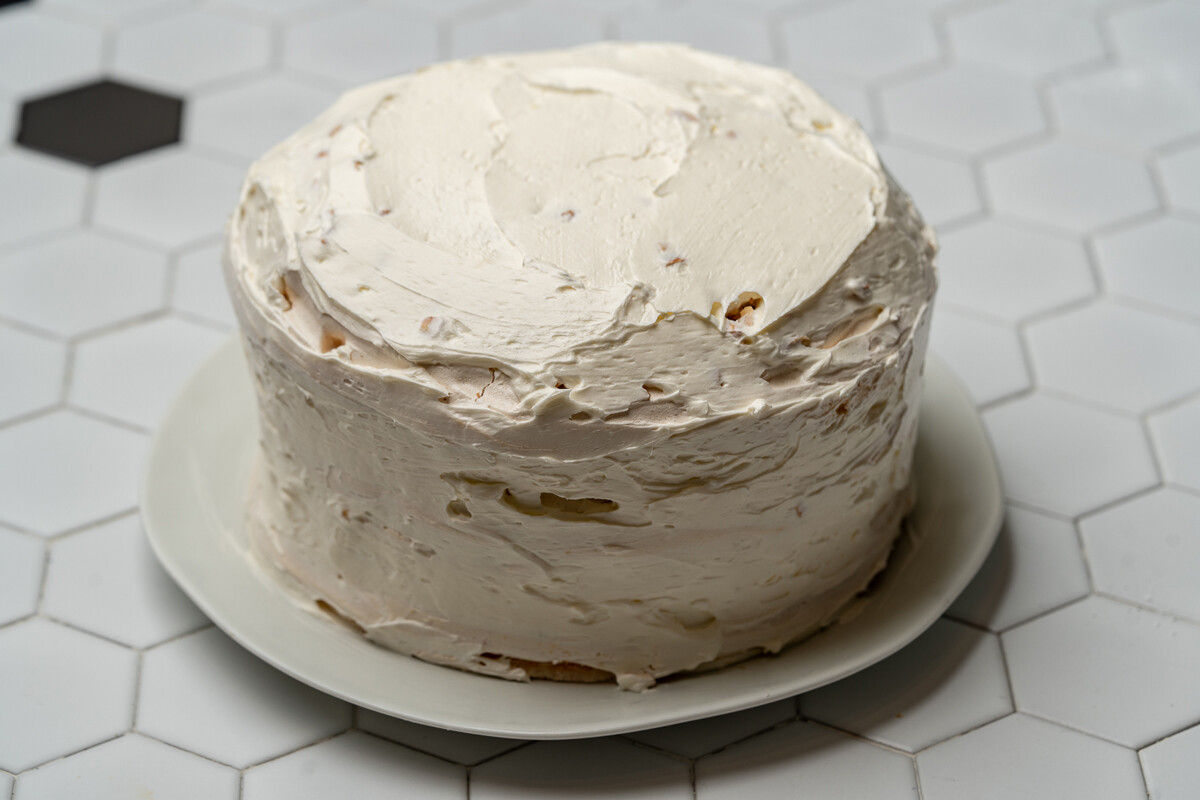
31. Decorate the sides with meringue.
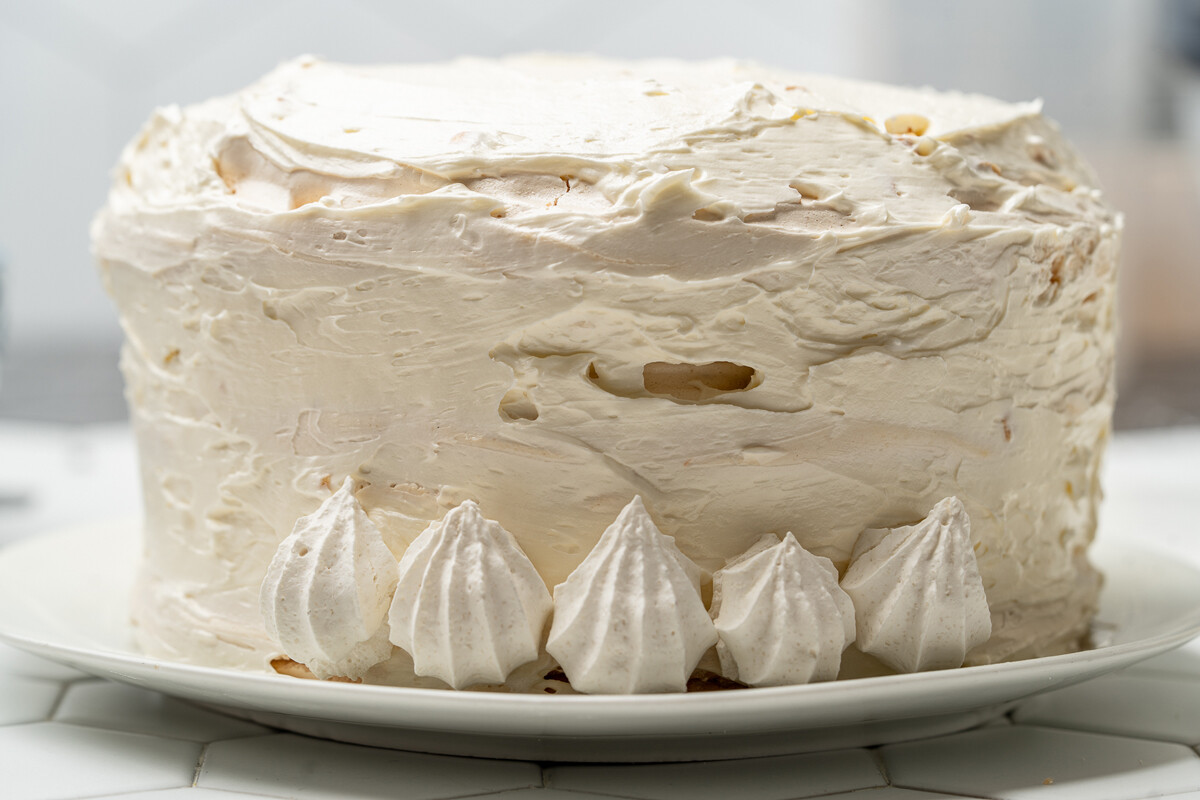
32. Decorate the top of the cake with fresh berries.
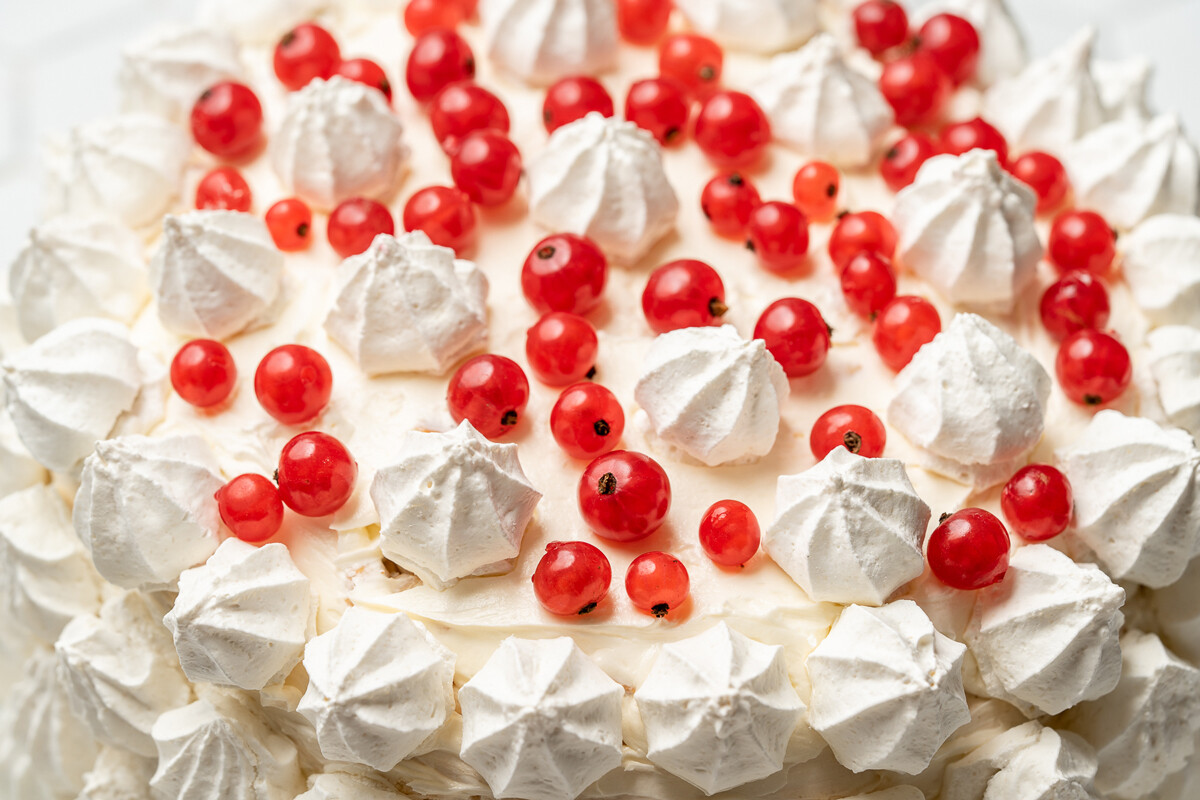
33. Place in the fridge overnight.
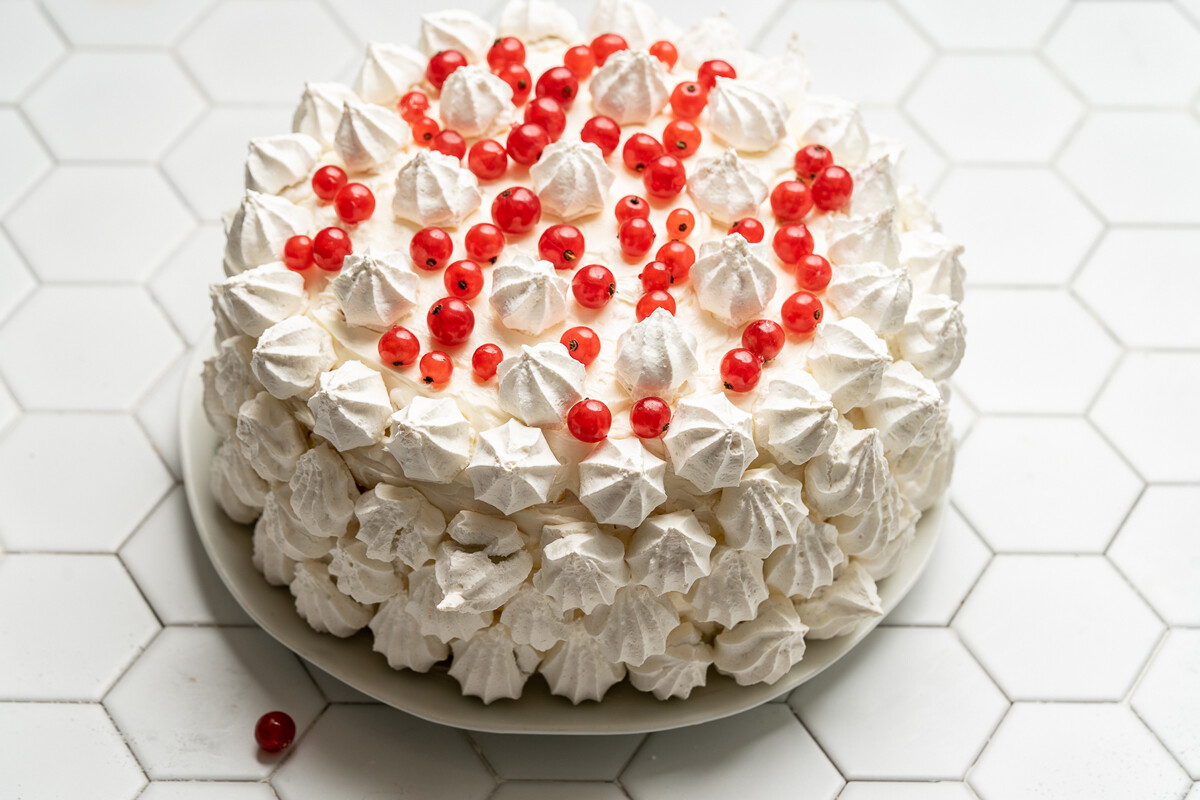
34. Serve with tea or fresh berries.
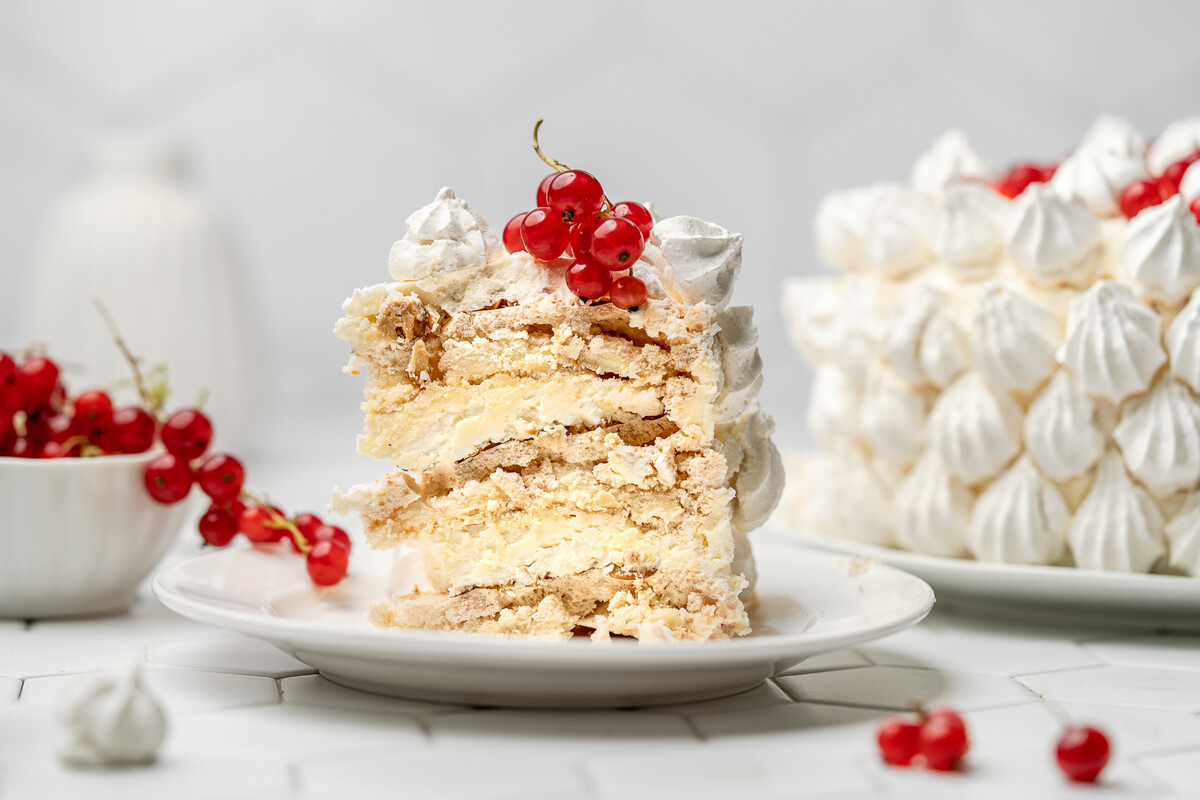
Dear readers,
Our website and social media accounts are under threat of being restricted or banned, due to the current circumstances. So, to keep up with our latest content, simply do the following:
Subscribe to our Telegram channels: Russia Beyond and The Russian Kitchen
Subscribe to our weekly email newsletter
Enable push notifications on our website
Install a VPN service on your computer and/or phone to have access to our website, even if it is blocked in your country
If using any of Russia Beyond's content, partly or in full, always provide an active hyperlink to the original material.
Subscribe
to our newsletter!
Get the week's best stories straight to your inbox